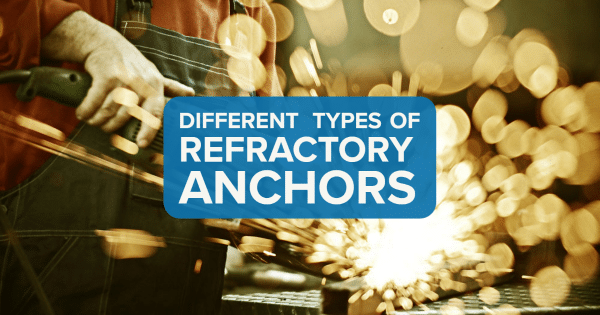
Refractory anchors are critically important to doing high-heat work. They’ve gone to space on the Space Shuttle, used to secure the famous silicate tiles that protected the Shuttle from the incredible heat of reentry. Refractory anchors hold a refractory lining to the wall of an industrial application, keeping it from falling in and protecting your forge, kiln, or other high-heat application from the heat that it contains.
According to New Equipment Digest, it’s estimated that over 40% of refractory lining failures happen because of a failure in the anchor design. When designing an anchor system, it’s important to choose a type of refractory anchor that works seamlessly with the system, because a monolithic wall against heat transfer is the most important barricade against a failure of the heating system’s wall. Here’s an overview of the different types of refractory anchors for your reference.
The most common anchor system is a metallic anchor. Metallic anchors are typically designed in a V shape and have a maximum depth of penetration into the material to avoid their being damaged by the extreme heat the refractory is exposed to. Metallic anchors are durable and versatile, able to handle high-heat environments well. They are typically cast within the castable insulation and cannot be removed from the cast material once it’s cured. Alloy castings are also traditionally used for plastics in low-heat and moderate-heat applications.
Metallic anchors typically come with plastic caps to help manage the difference in thermal expansion between the anchor material and the refractory material. The plastic caps should be polyethylene plastic, which melts more cleanly and is chlorine-free. Chlorine is not good for castables or steel alloy and can cause failure. The caps have a low melting point and, after melting, leave behind a void space for the metallic anchors to expand into, mitigating expansion damage to the lining.
The most common metal to use in a refractory anchor is Inconel, a high-nickel steel alloy with a very high melting point. Inconel anchors are reliable and relatively inexpensive.
A ceramic anchor is preferred for thicknesses above 9 inches or temperatures above two thousand degrees Fahrenheit. These anchoring devices have much greater heat tolerance than metallic ones and are made to order. They are typically cast in place and secured to the wall with a metallic bracket.
Choosing the right type of refractory anchors will be crucial to the success of a refractory wall. Knowing your application and the heat it will be exposed to will help you to make the correct decision. If you’re in need of refractory anchors, check out the wide selection available at Refractory Anchors Inc (RAI) today.